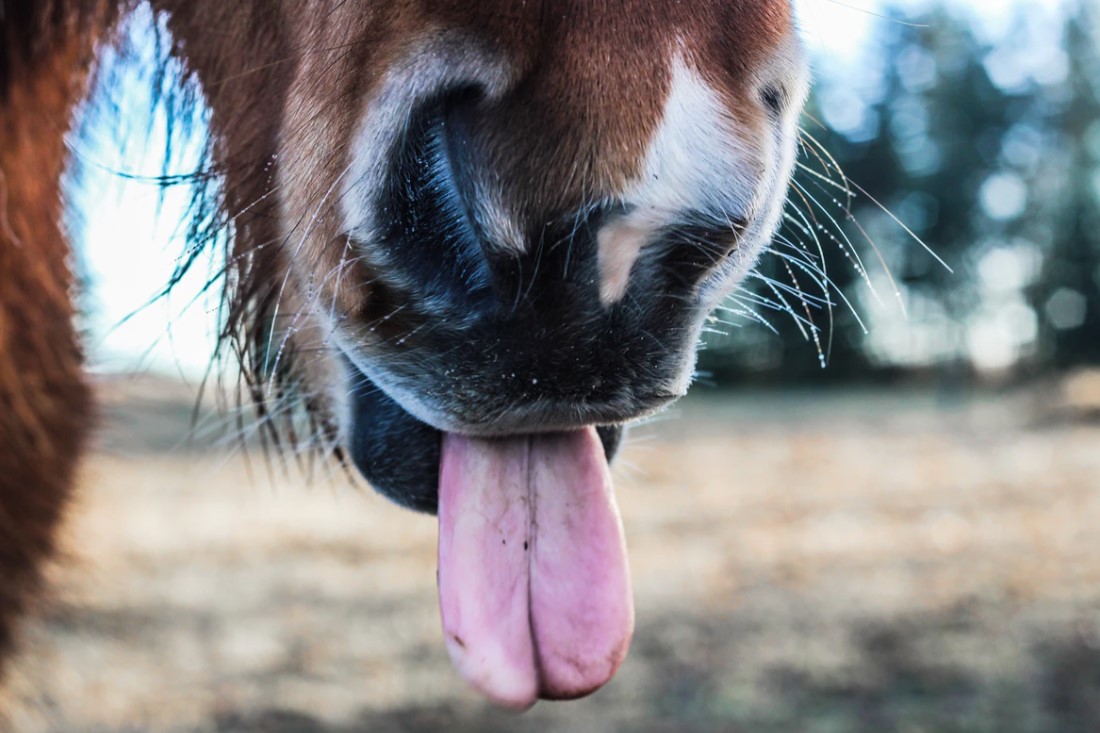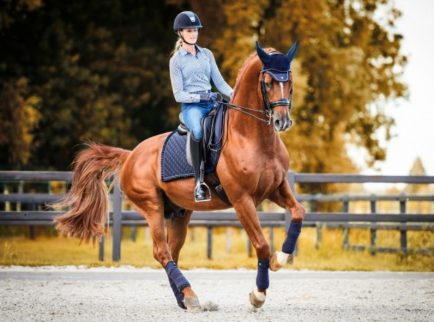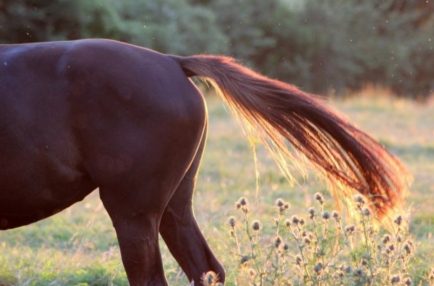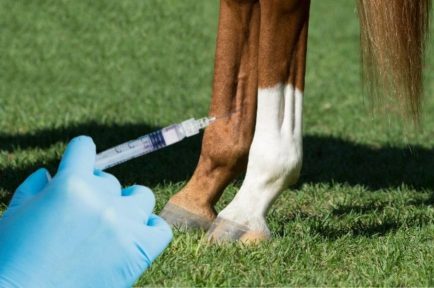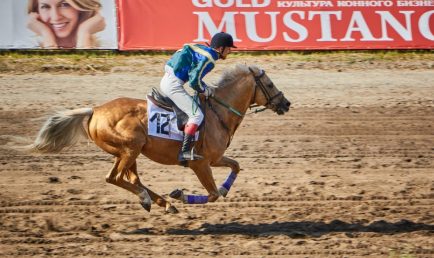Q: My 9-year-old gelding has a habit that seems to be getting worse instead of better. I have regular instruction—dressage basics with some jumping. But when I ask my horse to accept more contact, he hangs his tongue out of the right side of his mouth. The more contact I take, the more he sticks his tongue out. He has had regular dental care with periodic floating. Different bits, such as a KK and a regular snaffle, have not solved the problem. A drop noseband does not seem to help either.
A: This is a difficult problem, but you’re on the right track by looking at bits and teeth.
As an Amazon Associate, Dressage Today may earn an affiliate commission when you buy through links on our site. Products links are selected by Dressage Today editors.
Tongue lolling is usually a reaction to pain. If your horse is experiencing mouth and especially tongue pain, he typically will react by pulling his tongue toward the back of his throat. Trying to hold his tongue in this position obstructs airflow and causes tension and tongue cramping. He then will try to find another way to avoid the painful bit pressure, tongue cramps and impaired breathing by hanging his tongue out of the side of his mouth. We can begin to figure out how to correct this problem by examining jaw and tongue flexibility, bitting and the rider’s hands.
Jaw and tongue flexibility:
Your horse needs to be able to move his jaw freely from side to side. When he carries a bit in his mouth, he creates a good deal of saliva and needs to be able to swallow. When he swallows, the tongue lifts toward the palate. If a painful, overly thick or strongly held bit is in the way or if the horse’s jaw is held too tightly by any kind of noseband, he cannot relax his jaw or lift his tongue and swallow comfortably. If your horse has to push hard against the bit with his tongue in order to lift it enough to swallow, he will tense not only his tongue but his jaw and neck as well.
Also, there is much more to your horse’s tongue than the end that hangs out of his mouth. The tongue is the single largest muscle in your horse’s head and in the upper part of the neck. Even when a horse is completely relaxed and happy, his tongue fills his mouth with little or no room left over for anything else, including a bit.
Finding the right bit:
Horses with thick tongues and low palates often cannot bear the discomfort of a single-joint snaffle. Such horses tend to go well in the gentlest possible form of snaffle: a relatively thin, loose-ring French link.
The popular double-jointed KK bits can be too severe for some horses; these bits are less likely to contact the horse’s palate but put more pressure on the tongue. You’ll want to find the thinnest, smoothest bit that will be the most comfortable for your horse. Try a French-link Baucher, if he cannot tolerate any pressure or a loose-ring, French-link snaffle, if he can tolerate a small amount of pressure. Don’t automatically reach for a thick bit.
Although the size and shape of each horse’s mouth will be unique, it is generally the case that if you ride with a light contact, a thinner bit is gentler and more comfortable than a thicker bit. Position the bit so that it is barely touching the corners of the horse’s mouth, then allow the horse to determine whether the bit should stay in the “default” position or whether it should be dropped or lifted slightly. You need to make your horse comfortable physically and emotionally so he can relax and realize that the bit is not a method of inflicting pain but rather a lightly held, two-way communication device. Experiment. Your horse will tell you which bit he prefers and where it will be most comfortable.
The rider’s hands:
A lolling tongue is considered to be a resistance because it’s almost always a reaction to the rider’s hands. What we humans call a “resistance” is, in horse terms, only a horse’s natural reaction to pain, fear or confusion. So keep the lightest possible contact that will allow you to provide steady, reassuring communication to your horse through the reins. There are no absolutes—dressage is an art, not a science—but I’ve found that horses go much better if their riders can learn to keep the “weight in their hands” at three ounces or less.
Next, check yourself to see if your contact on the reins with your horse’s mouth is even. Some horses hang their tongues out because their riders are, without realizing it, putting more pressure on one side of the bit than the other. Generally horses stick their tongues out on the left side because riders are often stronger and more active with their right hands. Since your horse lolls his tongue out of the right side, make a particular effort to exert only the softest pressure on your left rein.
In dressage, the horse learns to seek the bit, but he won’t be willing or able to unless his body is supple, strong and responsive to your seat and leg. One way to strengthen his body is by doing as many good transitions between and within gaits as you can fit into your riding program. As you ride your horse softly, kindly and correctly, he will become comfortable and carry his tongue inside his mouth, having no reason to wad it up or hand it out.
Your horse’s tongue-lolling problem won’t go away overnight. Fortunately for your horse, you seem like the sort of rider who wants to get the right results in the right way, even though the right way is the long way.
Original article: Tongue Resistance in the Dressage Horse (dressagetoday.com)















